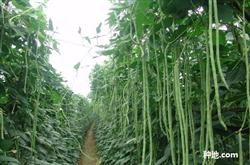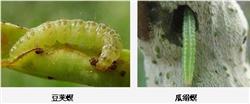How to prevent rust from growing beans in autumn?

How to prevent rust from growing beans in autumn? Please introduce the growth environment of autumn planted beans with high temperature and more rainfall, coupled with the large bacterial source (summer spores) of beans planted in spring in the field. Therefore, beans planted in autumn are prone to rust, and farmers should carry out comprehensive control as soon as possible. Main symptoms: bean can be infected with bacteria during the whole growing period, but the resistance is weakened and the susceptibility is enhanced during the period from the beginning of flowering to fruiting. The disease mainly affected the leaves, and in the early stage of the disease, there were little faded yellow and white spots under the leaves, and the spots gradually increased until the whole leaf was densely covered. A slightly raised yellowish-brown spot was formed on the back of the disease spot, that is, the summer spore pile, which broke and scattered a large number of summer spores, and sometimes formed a black winter spore pile on the old leaves in the later stage of growth. The leaves are withered and yellow, the plants are short, the pods are few and small, the growth period is shortened, and finally wither and die. Prevention and control methods: comprehensive control measures based on strengthening the management of soil fertilizer and water, supplemented by timely spraying. The main results are as follows: 1. Remove the diseased body and reduce the source of infection: after spring planting beans are harvested, the dead seedlings of residual plants are collected and burned to reduce the source of infection. 2. Seed selection and site selection: selection and planting: disease-resistant varieties, such as Suifeng 8 and Zaofeng 3, should be planted in double rows or single rows, which is easy to eliminate stagnant water and dredge air, which is not conducive to the landing and invasion of summer spores. Land selection: it is best to choose the previous crop as the field for planting Gramineae, rather than the previous crop for legume or peanut. In this way, it can avoid the direct attack of rust. 3. Rational fertilization: applying sufficient base fertilizer, early topdressing and increasing phosphorus and potassium fertilizer can enhance the activity of root nodules, sturdy plant growth, thick green leaves and enhanced disease resistance. 4. Timely application of pesticide for prevention and treatment: timely application of pesticide at the initial stage of the disease. The medicament can be sprayed with 50% trimethoprim 600 Mel 800 times or 50% sulfur suspending agent 500 Mel 600 times or 70% methyl topiramate 800 Mel 1000 times. Spray every 8 Mel every 10 days and spray 2 Mel 3 times in a row. Click to get more bean planting techniques click to get more vegetable planting techniques
- Prev

How to grow beans with high yield?
How to grow beans with high yield? Please guide beans, also known as cowpeas, asparagus beans, its cultivation has a long history. The area of cultivated beans in Guangdong Province is large, which is mainly on the market from April to December. In recent years, the market demand of beans is large, and the production efficiency is high, so it has become the main vegetable crop in many areas of our province. Kind of.
- Next

How to prevent and cure the bean borer?
How to prevent and cure the bean borer? Please introduce the bean borer, also known as cowpea borer, which is one of the main pests of beans. Cowpea borer adults are scattered and concealed, with a large range of eggs and a large number of eggs, so it is not easy to spray or trap. Control methods: first, the soil should be treated with insecticidal treatment before sowing, and its medicament should be.
Related
- Where is it suitable to grow horseradish in China? it is expected to see the middle altitude horseradish in Alishan.
- How to prevent tomato virus disease reasonably? (Control methods included)
- Many people like to plant towel gourd on the balcony. What are the main points of this method and management?
- What crops can chili peppers be mixed with?
- Fertilization techniques and matters needing attention in Tomato
- What are the grafting techniques for peach seedlings in spring?
- Harm and control methods of root swelling disease of Chinese cabbage
- What are the pests of sweet potatoes? How to prevent and cure it?
- Symptoms, causes and Control methods of navel Rot in Tomato
- The cause of "Cucumber rotten bibcock" in Farmers' planting Cucumber and its Control Plan

